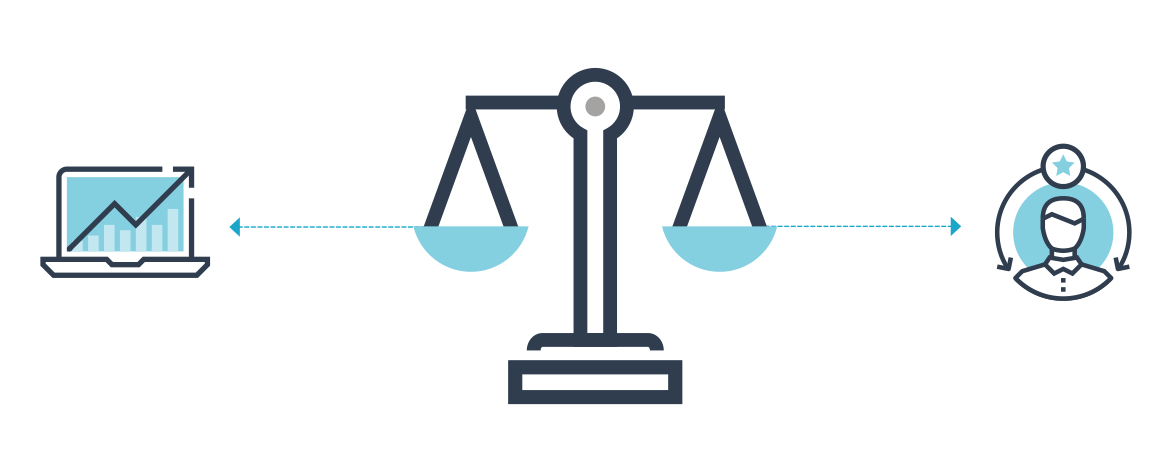Loyalty Launch Guide
How to Launch a Customer Loyalty Program in 6 Easy Steps.
Invite friends to Ambassador and earn $250! For every person you refer who takes a demo, you will earn $250.
Enroll TodayRunning an affiliate marketing program can be a lot of work. Here are 5 best practices to get your program started quickly and efficiently.
My first taste of an affiliate marketing program came with law school and online poker. While not the most common cocktail when it comes to word-of-mouth marketing strategies, I saw the network effect firsthand. I was referring friends to play poker online and making a small amount in affiliate fees. As I continued to share my affiliate links, that small amount doubled, tripled, and eventually grew to be enough to pay off my law school loans, shift my career path, and kick off my journey as an entrepreneur.
Now this is probably why affiliate marketing has a special meaning in my heart. This is also why it really irks me when marketers tell me affiliate marketing won’t work for their business because “it’s outdated.”
That couldn’t be further from the truth.
In fact, Amazon currently has over 900,000 worldwide members in its affiliate programs1. More so, the Amazon Affiliate Program is used by over 1.2% of all websites on the internet. It’s been proven that affiliate marketing can drive new customer growth for your business and use indirect advocates to make sales.
So what exactly is the hesitation from marketers?
Well, the reality is, affiliate program management is a lot of work. It’s not a strategy you can set and forget. Like any other marketing strategy, it takes time to create and define the specifics which will deliver results for your business. And then it’s continuous management of your program. Some brands with successful affiliate marketing strategies in place have dedicated staff fine tuning their programs on a daily basis.
Now this is not to deter your company from trying affiliate marketing. In fact, if you’re up for the challenge (you’re a marketer, of course you are), this channel is one that will provide remarkable ROI. We’re here to help you get started with 5 best practices to run an effective in-house affiliate marketing program.
 Know the stakeholders in your company who can help execute on the program. While marketing likely will handle the content & collateral, you’ll want to sync up with your tech team to add tracking codes to your website. Don’t forget to circle up with finance as well, depending on how you plan to pay those commissions (especially if you are running a B2B affiliate marketing program with competitive commission structure). If you’re going to automate the process or scale an existing program, this is also when you want to start vetting technology vendors to find the right fit for you. The more prepared you are, the smoother and more successful your launch will be.
Know the stakeholders in your company who can help execute on the program. While marketing likely will handle the content & collateral, you’ll want to sync up with your tech team to add tracking codes to your website. Don’t forget to circle up with finance as well, depending on how you plan to pay those commissions (especially if you are running a B2B affiliate marketing program with competitive commission structure). If you’re going to automate the process or scale an existing program, this is also when you want to start vetting technology vendors to find the right fit for you. The more prepared you are, the smoother and more successful your launch will be.
Affiliate marketing is about driving positive and efficient ROI for your company. Know your average customer acquisition cost (across other marketing channels) along with the lifetime value of those customers. Armed with this knowledge, you can create an incentive that affiliates will appreciate while leaving a healthy margin for your company.
Figuring out the incentive structure can be tough but start with the basics. Do you want to give a percentage of the total sale (leaving room for someone to purchase multiple products), or do you want to give a specific monetary bonus for a single product or service? Not sure what will work best for you? Check out these case studies to see what worked for other companies.
The next step in the process is deciding whether you want to launch an internet-wide affiliate program, posting information that’s publicly available on your website, or if you want to keep it more exclusive and reach out to specific influencers or thought leaders.
Our expert take: It’s critical to curate, vet, and establish working relationships with the best and most relevant people to represent your products and/or services. A partnership approach lets your brand directly own the relationship with affiliates, rather than renting from a third-party network. We'll discuss the partnership approach in more detail later on.
 Whether you choose to maintain your affiliate program using spreadsheets and manual processes, or invest in affiliate marketing software to automate the program, the next stage in the process is to continually educate your affiliates about new product launches, updates and offers. Some of our most successful clients choose to do this through monthly webinars or email updates, and others work 1:1 with influential affiliates to go over product details and perks. Your affiliates are almost like an in-house sales team – giving them the opportunity to stay up-to-date on your offerings will increase sales.
Whether you choose to maintain your affiliate program using spreadsheets and manual processes, or invest in affiliate marketing software to automate the program, the next stage in the process is to continually educate your affiliates about new product launches, updates and offers. Some of our most successful clients choose to do this through monthly webinars or email updates, and others work 1:1 with influential affiliates to go over product details and perks. Your affiliates are almost like an in-house sales team – giving them the opportunity to stay up-to-date on your offerings will increase sales.
While affiliate marketing software can show you insightful metrics, your data doesn’t do you a lot of good if you don’t interpret it. Every month, set aside time to sit down and analyze which affiliates are bringing the most business, and how they are doing this. Would it make sense to offer affiliate bonuses, or are there similar brands or people that could be beneficial to engage to join your program? By understanding trends and wins, affiliate management can quickly become a growth factor in your overall marketing strategy.
Looking for more ways to optimize your strategy? Check out these 19 affiliate marketing tips every marketer needs to know.

When it comes to building out successful affiliate marketing programs, one of the trickiest elements is finding the right affiliates who value your product as much as you do. Sure, you can sign up for an affiliate marketing network and almost instantly gain access to hundreds or thousands of affiliates. Once you upload content and assets, all you have to do is wait to see the results (which will likely be a marginal lift in traffic). It’s fast, easy, and fairly predictable.
So what’s the drawback?
Your brand doesn’t have direct control over those affiliate relationships: you aren’t hand-picking your affiliates, and because you’re renting your relationships, you’re subject to fluctuations in contracts from the network or agency, which is acting as the middle-man.
Furthermore, the success (and cost) of campaigns run through networks is highly dependent on how much you are willing to pay an affiliate to display your content or ad. For example, if you’re an online swimwear boutique and are competing for ad space on an affiliate’s fashion website against a larger retailer, like Nordstrom, chances are you’re going to lose that battle. Most likely, Nordstrom’s affiliate commission budget is higher than yours and if they are offering to pay affiliates 8% of sales that convert and you’re offering only 5%; you can bet the affiliate is going to display Nordstrom’s ad over yours.
So, what’s a better way to approach affiliate marketing?
While an organic affiliate program is more labor intensive, it’s also more likely to build valuable relationships with people who are well-suited to represent the brand.
Here are three key steps that can help you take a partnership approach to working with affiliates:
 1. Seek out affiliates who connect strongly to your brand, its products, and values
1. Seek out affiliates who connect strongly to your brand, its products, and valuesIf you decide to create an organic affiliate program, it’s time to start vetting potential affiliates. Seek out people who have an existing affinity for your brand—for instance, loyal customers who are already vocal about their love for you on social media or in product reviews on your website. The best affiliate content is created by affiliates themselves. By locating affiliates who are willing to serve as partners with a stake in your success, rather than just ad servers, you increase the likelihood of your campaign paying off with conversions and sales.
 2. Get creative with your affiliate content, and encourage creativity among your affiliates
2. Get creative with your affiliate content, and encourage creativity among your affiliatesNowadays, affiliate content is more than just an Instagram post labeled #sponsored. Creative initiatives also include affiliates writing posts about your brand on their blog or website, featuring the affiliate on your own social media channels, or letting them do a takeover of your feeds for the day. When you attract your affiliate’s audience directly to your own platforms, you gain potential customers, and affiliates are very likely to share content that features them and their brand. Both sides of the equation have a brand to enrich, and creative campaigns are a good way to let both affiliate and company take ownership of the content and encourage cross-pollination among their audiences.
 3. Invest in your affiliates and be clear about terms, but don’t necessarily pay them upfront
3. Invest in your affiliates and be clear about terms, but don’t necessarily pay them upfrontInvesting in your affiliates makes them feel valued and further incentivizes their participation. That said, unless you feel strongly that it will negatively impact your affiliate relationships, there is no reason that affiliates need to be paid upfront. This practice makes it too easy for affiliates to get paid, deliver a post, and then move on to the next brand that’s willing to pay them. That’s not really what you’re looking for in an affiliate anyway. Instead, turn your focus to investing in affiliates who will view your brand as a genuine partner, and establish clear guidelines around payment schedules, number of times they will mention your product, what platforms they will employ, and other relevant expectations.
Now is the time that quality over quantity really matters. The shift towards this more personal marketing approach delivered by automated affiliate marketing is driven by relationships built on connections, creativity, and transparency. When you equip your affiliates with motivation and tools - like affiliate software - to succeed, they will deliver!
Looking for a real-world example from a company that has freed up 10+ hours per month and increased referral and affiliate sales by more than 300%?
[1] https://en.wikipedia.org/wiki/Amazon_(company)#cite_note-110
The advanced guide for brands interested in an influencer marketing platform to automate their influencer programs to scale & optimize this...
While affiliate marketing has been around since the early nineties, we are now seeing more and more companies getting smart about their affiliate...
By 2020, U.S. affiliate marketing spend is expected to rise to $6.8 billion. For successful affiliate management, relationship building is crucial....
Sign up for our Ambassador newsletter and get notified when we publish new
eBooks, case studies, blog posts and more. It's like a crash course in referral
marketing - and it's free. Plus, we promise not to spam you.
Platform
© 2024 i2H Inc. All rights reserved | Privacy Policy
© 2021 Kalungi, Inc. - All Rights Reserved.
Powered by Atlas - a B2B SaaS HubSpot theme